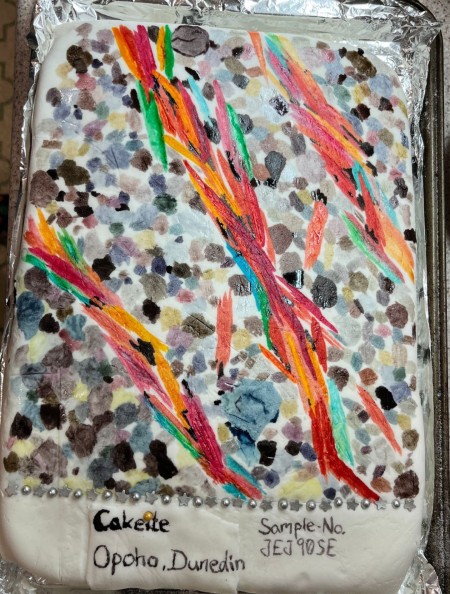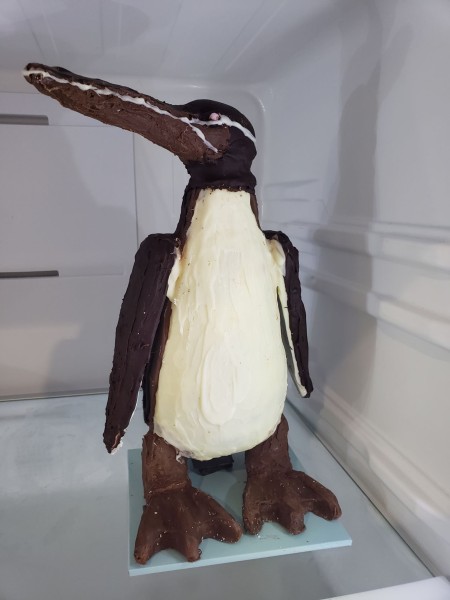Geobake 2023 winner announced
Braided Rivers & the Southern Alps by Inge Smythe
Congratulations to the winner of the Geobake 2023, Inge Smythe, with her wonderful creation: Braided Rivers & the Southern Alps.
Inge described her entry:
Tectonism has produced a rigorous, geologically active alpine environment. Braided rivers characterize the South Island’s landscape and their planform is in part related to a high sediment yield derived from the uplift of the Southern Alps. Slope-derived sediment deposited on braid plains creates bifurcating channel networks which typify braided rivers.
Inge wins a one year subscription to the GSNZ for her efforts.
Thank you to everyone who took part in the Geobake across the country and sent in their entries to be judged. We had a great response this year and as always the standard was extremely high.
The entries below each won a spot-prize of a beautiful Zealandia Drinking Glass.
Geobake 2023 winner: Braided Rivers & the Southern Alps by Inge Smythe
Spot prize winners 2023

Cakeite thin section by Javiera Ruz Ginouves, Emeline Wavelet and Julian Eschenroeder
Ground breaking discovery of Cakeite in Dunedin: unravelling its secrets with a beautiful thin section! Discovered by three postgrad students on the heights of Opoho, Dunedin, this metamorphic rock full of quartz, muscovite and colourful biotite has everything to delight your curiosity, eyes and taste buds!

Kumimanu by Jenny Stein
Kumimanu fordycei was recently described from ~57 million year old fossils found on a North Otago beach in 2016. Named for Otago University Emeritus Professor Ewan Fordyce, it is the largest known penguin to have ever lived, standing ~1.6m tall and weighing ~150kg! This 1/6 scale recreation (1/100 scale by weight!) is moulded from lolly cake and coated in white, milk and dark chocolate, with candy drop eyes.

Sediment core by Kat Holt
A cake version of a sediment core taken from a lake somewhere in the North Island of Aotearoa. The base of the core is blue-grey silt, marking the underlying rock which the lake formed on. Moving up, the sediment becomes darker as the lake forms. Other layers represent events in the lake basin and catchment (e.g. a peat bed and tephras).
